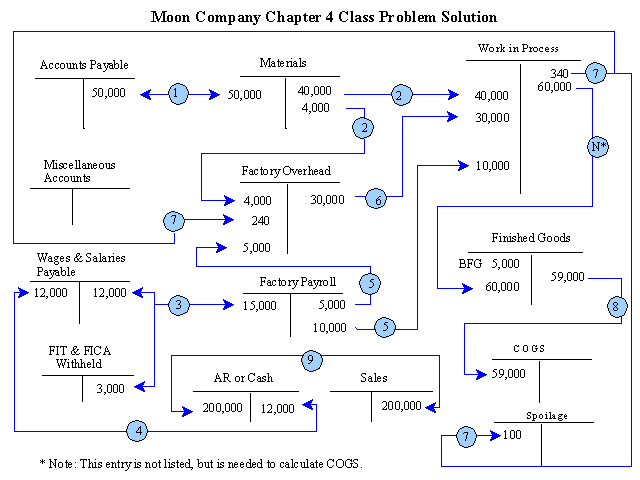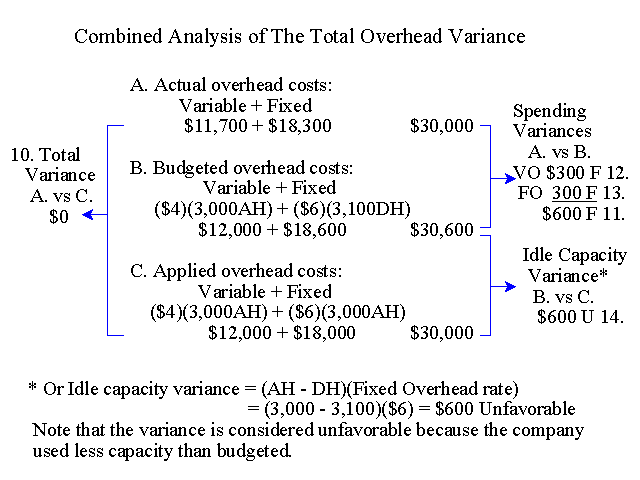
Chapter 4 Class Problem and Solution
James R. Martin, Ph.D., CMA
Professor Emeritus, University of South Florida
Chapter 4 | MAAW's Textbook Table of Contents
Part I. The Moon Company had the following transactions during January of 200X.
| Sales Cost of direct material used Direct labor cost incurred Sales salaries Administrative salaries Other administrative costs Other factory overhead costs incurred Other selling costs Ending finished goods Purchases of materials Indirect labor costs incurred Net factory payroll after withholding Cost of indirect materials used Cost of jobs completed Beginning finished goods Normal spoilage: Common to all jobs Caused by customer's specifications Disposal value of all spoilage Factory overhead rate per D.L. hour Direct labor hours used during the period |
$200,000 40,000 10,000 6,000 6,000 10,000 20,000 5,000 6,000 50,000 5,000 12,000 4,000 60,000 5,000 300 200 100 10 3,000 |
Required: General journal entries to record the following:
1. The purchase of materials.
2. Material usage.
3. The factory payroll.
4. The payment of the factory payroll to employees.
5. The distribution of payroll costs.
6. Applied factory overhead.
7. Spoilage.
8. Cost of goods sold.
9. Sales.

Note on entry 3: 10,000 DL + 5,000 IL = 15,000 Factory payroll. Since net pay is given as $12,000, withholding must be $3,000.
Note on entry 6: Applied overhead is ($10)(3,000 DL hours) = $30,000.
Note on entry 7: Both normal spoilage and abnormal spoilage share credit for the disposal value. The customer is left with $200 - $40 = $160. Since customers' specifications caused 2/5 of the spoilage, they get credit for 2/5 of the disposal value. Factory overhead is charged with $300 - $60 = $240. Since normal spoilage represents 3/5 of the spoilage, 3/5 of the disposal value is subtracted from 300 to obtain the amount to charge to factory overhead.
Note on entry 8. $5,000 Beginning FG + $60,000 COGM - $6,000 EFG = $59,000 COGS.
Part II
Ignore your previous answers and assume that the total actual overhead was $30,000 and included $11,700 variable overhead and $18,300 fixed overhead. Assume the $10 factory overhead rate per direct labor hour represents $4 of variable overhead and $6 of fixed overhead. Also assume that these rates were based on 3,100 denominator direct labor hours. Note: actual D.L. hours are still 3,000.
Required: Calculate the following variances and indicate if each variance is favorable or unfavorable.
10. The total overhead variance.
11. The total spending variance.
12. The variable overhead spending variance.
13. The fixed overhead spending variance.
14. The idle capacity variance.
